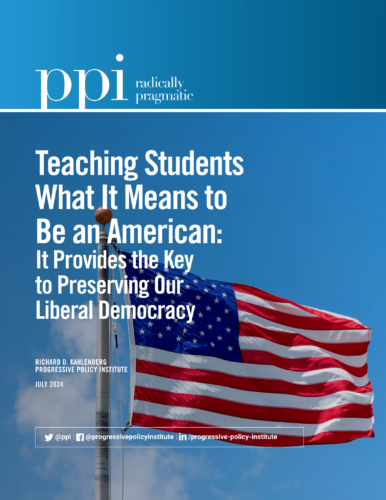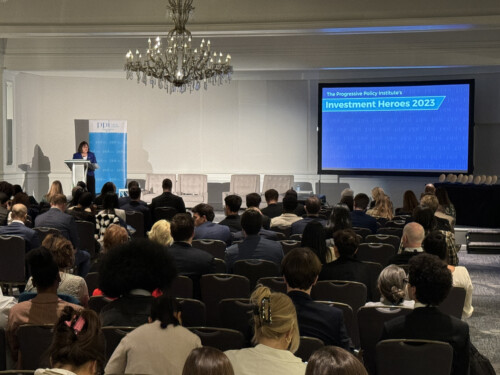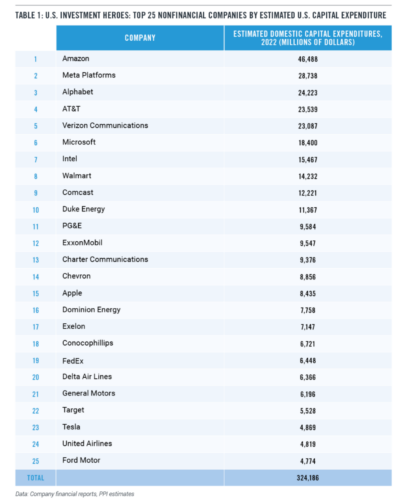At every turn, the Trump administration and Republicans in Congress have bungled the coronavirus pandemic and shortchanged our recovery. For the first month after most programs created by the CARES Act – the last major stimulus bill passed by Congress back in March – expired, the GOP wasted valuable time on half-measures that could not pass and executive orders that do not help. Washington Republicans have now completely abandoned work on further relief measures so they can focus on a partisan gambit to pack the Supreme Court with yet another right-wing justice before voters have a chance to make their voices heard in just five weeks.
It didn’t have to be this way. Back in May, House Democrats passed the $3 trillion HEROES Act that they intended to be a follow-up to the CARES Act. Although the bill had many flaws, it offered a starting point for negotiations. Their Republican counterparts in the Senate, on the other hand, spent two months doing literally nothing to advance any additional relief legislation. It was only a full month after the major provisions in the CARES Act had expired that the Republican-controlled Senate voted on a partisan $500 billion “skinny” stimulus bill, which then failed to pass the chamber. Negotiations have now stalled due to GOP’s insistence on penny-pinching for a critical stimulus bill that, it should be noted, would almost certainly be less expensive than the wasteful $2 trillion tax cut the party enacted at the height of our most recent economic expansion.
In an attempt to cover for his party’s fecklessness, President Trump issued a series of executive orders ostensibly designed to fill the needs for further relief unmet by Congress. But as is too often the case with Trump, these actions were almost entirely superficial – and in some cases, actively harmful to the people supposedly helped. Rather than playing these pointless partisan games, Republicans need to join Democrats at the negotiating table and deliver a real solution for the millions of Americans struggling to survive amidst a global pandemic and the worst economic crisis since the Great Depression.
Anyone at Risk of Contracting Coronavirus
The first priority for policymakers must be controlling the pandemic, as our economy cannot fully recover until people feel safe going in public to work or spend money. Adequate testing and tracing are essential to preventing the virus from spreading until a vaccine is found, but delays in test results have already undermined our COVID response. Democrats proposed $75 billion for coronavirus testing and contact tracing as part of their stimulus proposal in the HEROES Act, while Republicans proposed a much-smaller $25 billion investment, including just $16 billion of new funding not reallocated from CARES Act programs. But without a deal, neither side gets any investment – and the virus continues to spread through our communities.
People Who Have Lost Their Jobs
Up to 26 million Americans remain unemployed thanks to the pandemic. In normal times, unemployment benefits typically only cover 34-54 percent of lost wages for a limited period of time. These benefits, however, are woefully insufficient during a prolonged period when few job openings are available to be filled. The CARES Act sought to address this problem by increasing UI benefits by $600/week through the end of July and extending the maximum number of weeks someone could claim unemployment benefits until December.
Democrats proposed to continue the full $600/week until January (or tie the extension of benefits to real economic indicators), while Republicans wanted to replace it with a $300/week supplement through the election). There was a very reasonable middle-ground here, as both sides agreed that supplemental unemployment benefits should not be allowed to expire in their entirety – but because no agreement was reached, that is exactly what happened.
Trump claimed to resolve the problem with an executive order letting states use Federal Emergency Management Agency (FEMA) money to establish a supplement for unemployment insurance. But this approach was riddled with problems: it depended on state unemployment offices, which are already burdened with crushing caseloads and obsolete information technology, to set up new administrative structures, delaying the receipt of benefits. The new supplement was worth only half as much as the one authorized by the CARES Act, and was not made available to low-income workers who receive less than $100/week in normal unemployment benefits. Finally, the FEMA fund only had enough money to fund benefits for six weeks – and required drawing upon funds that will likely be needed to fight wildfires out west and repair damage from hurricanes in the south.
Landlords and Lenders
Failure to adequately support unemployed Americans will have cascading effects throughout the economy. Because the unemployed then cannot spend as much money as usual, the businesses that rely on their patronage also lose income, which hurts workers throughout the broader economy and deepens the recession. They are also more likely to fall behind on payments for rents, utilities, or mortgages. The CARES Act included a temporary moratorium on evictions, but now that it is expired, millions of American families are at risk of losing their homes by the end of the year. Democrats have proposed imposing an even broader moratorium than was included in the CARES Act. The Trump administration, meanwhile, ordered the Centers for Disease Control to enact a limited moratorium on evictions until the end of the year for low- and middle-class renters.
Although a moratorium may give at-risk renters some temporary relief, it fails to resolve the underlying issue: lost income. Trump’s moratorium simply delays the inevitable for any renter who is behind on rent and would otherwise face eviction. Meanwhile, smaller landlords will lose out on income they need to pay for mortgages and property taxes, which puts them at risk of default. Lenders may also face significant losses from landlords and homeowners unable to make their required payments. If Congress were to instead provide adequate income support for people who have lost their incomes in the pandemic, they would ensure people can afford to remain in their homes without creating these new burdens.
Small Businesses and Their Workers
The CARES Act included a Payroll Protection Program (PPP), which gave small- and medium sized-businesses money to retain their workforce. That funding dried up when the program ended on August 8th. Here, Congressional Republicans actually want to be more generous, proposing almost $360 billion in small business support, loans, and employee retention provisions, while Democrats proposed $290 billion. But without a deal, small businesses – many of which are operating in industries, such as dining and hospitality, that have been particularly hurt by the pandemic – have not gotten any more support.
The only support for small businesses in President Trump’s executive orders was a counterproductive payroll tax holiday. Neither party in Congress supported Trump’s previous proposals to temporarily cut the payroll tax, so instead he used his limited authority to defer collection of some payroll taxes until next year. But since workers will still owe that money in 2021, many employers are just withholding the tax anyway. Meanwhile, federal workers – including those in the military – who cannot opt out of deferral are being advised not to spend the money so they aren’t financially flattened by the massive tax bill for back taxes they will receive next year.
State and Local Governments
The coronavirus pandemic has blown a massive hole in the budgets of state and local governments: income and sales taxes are drying up while spending on safety-net programs, such unemployment insurance and Medicaid, have increased dramatically. Because most state and local governments are required to balance their budget, this fiscal squeeze will compel them to cut their budgets right when people and businesses need government support the most.
Although Congress included some aid for state and local governments as part of the CARES Act, it only allowed this money to be spent on new coronavirus-related expenses, not to replace lost revenues. Republicans have proposed to loosen rules on how states could spend this aid, but offered no additional funding. Democrats, meanwhile, included almost $1 trillion in new funding for state and local governments in the HEROES Act.
Many on the right have argued that providing further aid would be a “bailout” for the finances of poorly-managed states, but this criticism is at best deeply misguided. PPI projects that state and local governments will need at least $250 billion in additional support beyond what was already appropriated before the end of 2021 just absorb the pandemic’s financial impacts without making deep cuts to essential services – and this figure could be even higher if the economic impact of this unpredictable crisis is worse than current projections. Rather than argue over an arbitrary dollar amount, Congress can easily address the concerns of both Democrats and Republicans by designing programs that provide aid to state and local governments based on the real pandemic-induced shortfalls realized on their balance sheets.
Parents and Families
The pandemic has taken a particularly brutal toll on parents who are unable to send their children back to school this fall. It is difficult for workers to do their jobs, either remotely or in-person, when they are unable to access child care that they usually could depend on at this time of year. It also poses a special burden on students from low-income families who lack the internet access necessary to participate in online classes.
The good news here is that both parties have proposed about $100 billion in additional support for schools. But they disagree on what it should be used for: the Trump administration would use this money to pressure school districts across the country to return to in-person classes, the even though doing so would be unsafe without the proper public health safeguards in place. The Democrats’ proposal, on the other hand, would also enable schools to stand up high-quality remote learning to keep their students learning while school buildings remain closed.
Unfortunately, these nuances don’t even matter at the moment: because Congress failed to reach a broader agreement, schools have received no additional federal support. Even worse, the looming shortfalls facing state and local budgets are likely to result in deep cuts to education spending (as they did following the 2008 financial crisis), further jeopardizing the long-term opportunities for children and families.
Voters
State and local governments face an unprecedented challenge administering a national election in the midst of a pandemic, made even worse by foreign governments threatening to interfere again like they did in 2016. The HEROES Act included $3.6 billion to support election integrity and vote-by-mail operations to make sure every vote is counted, while the Senate bill included nothing. As we enter the final stretch of what is perhaps the most contentious presidential election in modern history against the backdrop of several overlapping national crises, the failure of federal policymakers to support election infrastructure jeopardizes the bedrock of our democracy.
Conclusion
Although neither party’s proposals have been perfect, only one is making any serious effort to find common ground and support our economy in a time of unprecedented crisis. While House Democrats prepare to vote this week on a new package of proposals that is more moderate than the HEROES Act they passed four months ago, President Trump and Senate Republicans are leaving millions of Americans in the lurch by prioritizing partisan court packing over any further fiscal relief. Democratic candidates for office and all stakeholders, from the worker who is at risk of losing her home along with her unemployment benefits to the parent who cannot save his small business and give his child a decent education at the same time, should pressure Republicans to return to the negotiating table and work in the public interest – or face severe consequences in November.









